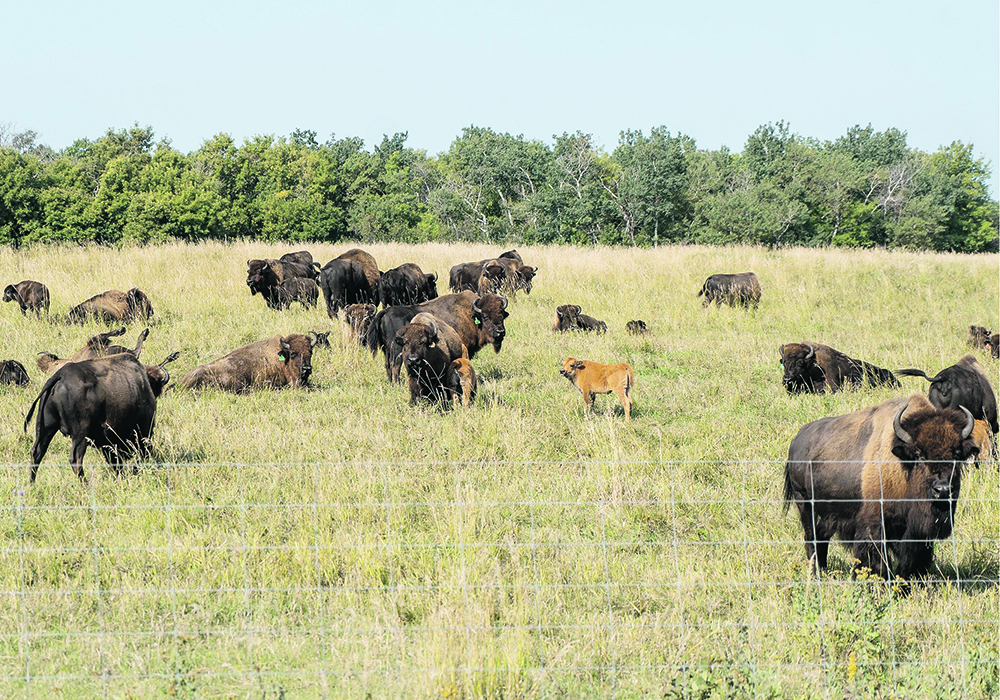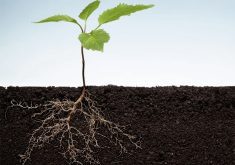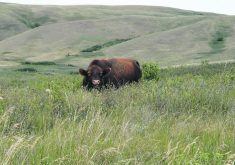Glacier FarmMedia – Manitoba Liquor & Lotteries is partnering with Manitoba Habitat Conservancy to offset some of the Crown agency’s carbon emissions.
The arrangement will see the agency contribute $72,300 to the non-profit Grassland Stewardship Agreements project, and used to cover the infrastructure costs of fencing for Ritchie Bison and their neighbour, Brian Powell, near Souris, Man.
The fencing provides a guarantee that the land will be kept as pasture, say those involved. That will assist in maintenance of biodiversity and carbon sequestration.
Read Also

New coal mine proposal met with old concerns
A smaller version of the previously rejected Grassy Mountain coal mine project in Crowsnest Pass is back on the table, and the Livingstone Landowners Group continues to voice concerns about the environmental risks.
The partnership aims to show a new possibility for companies looking to improve their environmental footprint while helping the ag sector.
“We were just looking at meat and dairy in general,” said Donna Dagg, manager of sustainable development at Manitoba Liquor & Lotteries. “And we were looking for an ecosystem or somebody who was interested in advancing the ecosystem from a biodiversity perspective, water holding capacity, generating less greenhouse gas emissions — the whole ecosystem approach.”
The conservancy’s Grassland Stewardship Agreements project is focused on maintaining Manitoba’s grassland ecosystems and grazing habitats for large grazers such as cattle and bison.
“The Prairies were evolved under grazing and livestock, and so it’s a natural fit,” said Stephen Carlyle, MHC’s chief executive officer. “And all of the animals and birds hanging out in those pastures all evolved to coexist with both animals (cattle and bison), basically, grazers.”
Carlyle said large grazing animals play an essential ecological role on the Prairies.
The Canadian Cattle Association and Canadian Bison Association commonly pitch their sectors as promoting biodiversity of plants and animals, as well having environmental benefits including carbon sequestration, especially through practices such as rotational grazing.
That’s why a partnership with the bison operation and its rotational grazing plan made sense, Carlyle said in a press release.
“This allows areas of native grassland to rest and put down large root systems while the bison graze other areas. These healthy root and plant systems, with the addition of manure from the bison themselves, really helps keep carbon in the ground that would otherwise be released into the atmosphere.”
Grassland experts commonly note that growth of root systems and grasses are important to the carbon cycle. Proponents of sustainable grazing say that pairing that growth with the hoof action of cattle or bison helps incorporate organic matter and stores more carbon, creating healthy grasslands.
According to the United States Department of Agriculture Climate Change Resource Centre, soil carbon accounts for approximately 81 per cent of a grassland ecosystem’s carbon. Grazing management practices are commonly used to maintain that carbon.
“Treating grazing and farms as ecosystems is such a cool way to look at the world,” said Dagg. “We tend to think of them (ecosystems) as coral reefs or oceans or forests, but you know, a farm is an ecosystem. And there’s so many things that farmers are doing to maintain that ecosystem for years to come.”
The project matched with the Crown agency’s priorities, which call for continued support of farmers and meat in local restaurants while also being ahead of the game in measuring greenhouse gas emissions.
The Crown corporation’s efforts have expanded to include a rating system, wherein emissions are ranked on a three-point scale denoting how directly that emission is linked to the organization. It also has a goal to develop strategies targeting different emission items and a goal of net zero by 2050.
Corporation representatives say there is no way to reach net zero without offsetting strategies. For that, a “nature-based solution” like the bison partnership was considered the best option.
“Looking at animal protein, it makes sense to go back to nature,” said Dagg.
To ensure both organizations are meeting their goals, an outcome assessment tool will be used by the conservancy.
The tool, developed in partnership with the International Institute for Sustainable Development, is a computer model that the organization uses to estimate results from ongoing conservation work. It’s built with information on current research, literature and expert opinions to estimate what effect the activities will have on certain landscapes.
The conservancy has used it on other projects, such as those funded by grants. It has seen success with the tool and the “good news” numbers it provides.
“We work in numbers. I mean, I’m attached to the finance department, so we love numbers,” said Dagg. “When the executive or my boss asks me what’s the estimated reduction in greenhouse gas emissions … our employees want to see what’s the benefit of that.”
This partnership is estimated to offset 1,001.25 tonnes of CO2 emissions per year through carbon sequestration.


















